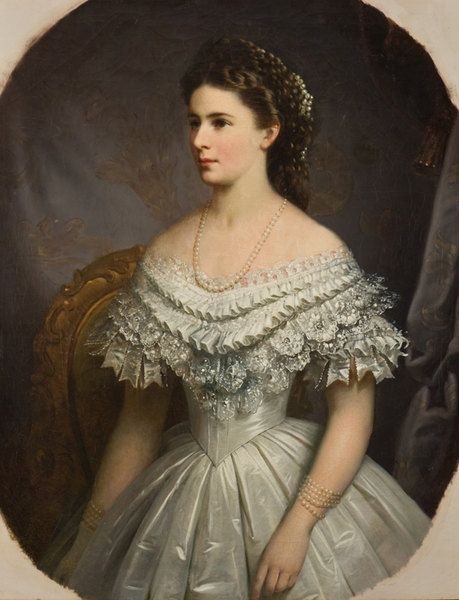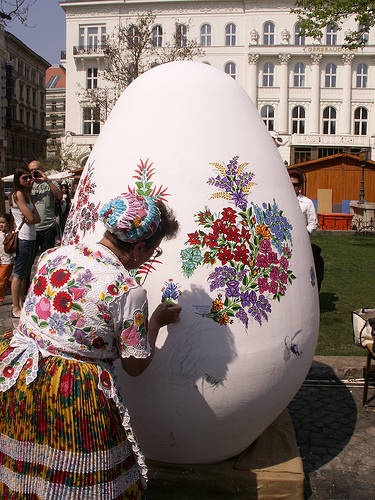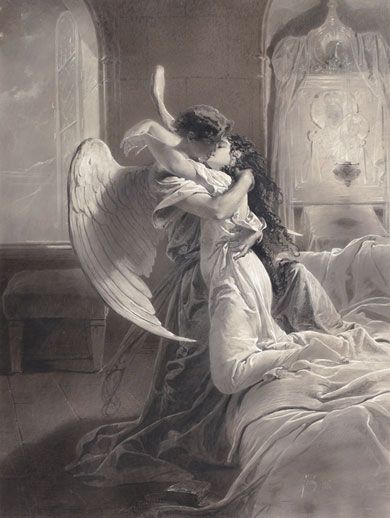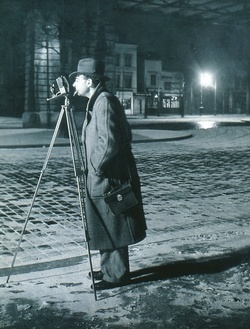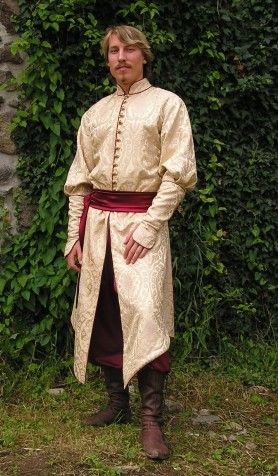Idioma húngaro
| Húngaro Magyar |
|
|---|---|
| Hablado en | |
| Hablantes | 14,5 millones |
| Puesto | 66o (Ethnologue, 2013) |
| Familia | Urálico Fino-Úgrico Úgrico Húngaro |
| Estatus oficial | |
| Oficial en | (Provincia Autónoma de Serbia) |
| Regulado por | Instituto de Investigación Lingúística de la Academia Húngara de Ciencias |
| Códigos | |
| ISO 639-1 | hu |
| ISO 639-2 | hun (B), def (T) |
| ISO 639-3 | hun |
 Extensión del húngaro |
|
El húngaro o magiar es una lengua de la familia de lenguas urálicas. Se habla en Hungría y en ciertas zonas de Rumania, Eslovaquia, Ucrania, Serbia, Croacia, Austria y Eslovenia. En húngaro, el nombre de la lengua se escribe magyar. Hay unos 14,5 millones de hablantes, de los que unos 10 millones viven en Hungría.
Índice
[mostrar]
Historia
Según la teoría más extendida y aceptada, el húngaro o magiar proviene de los Urales, de donde en el siglo IX d. C. las tribus magiares emigraron hacia lo que es hoy Hungría. A partir de aquí la lengua evolucionó pudiendo distinguirse los siguientes períodos:
- Proto-húngaro – hasta 1000 a. C.
- Húngaro arcaico – 1000 a. C. hasta 896 d. C.
- Húngaro antiguo – 896 hasta el siglo XVI
- Húngaro medio – siglo XVI hasta finales del XVIII
- Húngaro moderno – desde finales del siglo XVIII
Los textos más antiguos en los que ya se hace referencia a los hablantes del húngaro comomagyar datan del siglo XII; se considera que el Sermón funerario y oración (1192–1195) es el texto completo más antiguo conservado en húngaro, mientras que los primeros libros impresos en húngaro aparecieron en el siglo XVI.
Distribución geográfica
El húngaro se habla principalmente en Hungría, pero además se habla en Austria, Eslovaquia,Eslovenia, Rumania, Serbia y Ucrania, así como en varios países de todo el mundo debido a la emigración. En Rumania se concentra la mayor parte de los hablantes del húngaro fuera de Hungría: mayoritariamente en la parte oeste del país, en la región de Transilvania.
Esta dispersión se debe a que todos estos territorios pertenecían a Hungría dentro del Imperio austrohúngaro, y pasaron a los países actuales al acabar la Primera Guerra Mundial como compensación y con la condición de que se debía respetar el idioma.
El número de hablantes se sitúa en torno a 14 millones, estando aproximadamente 10,5 millones en Hungría, entre 1,5 y 3 millones en Rumania y 1 millón en el resto de los países limítrofes. A esto hay que añadir las personas que lo hablan y que se encuentran en otros países. También hay que tener en cuenta que no es el idioma materno de muchas de las personas que lo hablan fuera de Hungría.
Estatus oficial
El húngaro es el idioma oficial de la República de Hungría, además desde la entrada de Hungría en la Unión Europea en 2004 es también idioma oficial en la Unión.
Además de Hungría es oficial también en tres municipios de Eslovenia, en múltiples municipios de la Voivodina NE (Serbia) y de la Eslovaquia meridional; también es reconocido como minoría en Austria y Croacia. Luego de la aprobación de una ley de minorías lingüísticas en Ucrania en 2012, el húngaro adquirió estatus oficial en dos ciudades ucranianas, Béregovo yVinogradov, ambas en la provincia de Transcarpatia;1 tras larevolución europeísta y nacionalista de 2014 la Rada Suprema abrogó dicha ley.2 Sin embargo es en Rumanía donde se encuentra el mayor número de hablantes fuera de Hungría (1.450.000 personas, mayoritarias en 3 provincias y en múltiples municipìos de Transilvania).
Dialectos
Los dialectos que se conocen del húngaro son: “occidental” (oeste del Danubio), “septentrional”, “meridional” y “oriental”. Existen además algunos otros más pequeños, en cualquier caso cualquiera de los dialectos es entendible por el resto. Muchos húngaros al ser preguntados niegan la existencia de diferentes dialectos o de acentos dentro de Hungría, sin embargo reconocen diferencias regionales como el uso del artículo para referirse a personas en Budapest, o la peculiar pronunciación de la “e” en la zona de Szeged. Los húngaros de Erdély(Transilvania) usan una variante que los húngaros de Hungría consideran que mantiene formas y vocabulario más antiguo.
Fuente:
_________________________ ________________________ _____________________
Hungarian language
| Hungarian | |
|---|---|
| magyar | |
| Pronunciation | [ˈmɒɟɒr] |
| Native to | Hungary and areas of Austria,Romania, Serbia, Slovakia,Slovenia,Ukraine |
| Ethnicity | Hungarians |
|
Native speakers
|
13,000,000 (2002–2012)[1] |
|
|
| Latin (Hungarian alphabet) Hungarian Braille Old Hungarian script |
|
| Official status | |
|
Official language in
|
|
|
Recognised minority
language in |
|
| Regulated by | Research Institute for Linguistics of the Hungarian Academy of Sciences |
| Language codes | |
| ISO 639-1 | hu |
| ISO 639-2 | hun |
| ISO 639-3 | Either: hun – Modern Hungarian ohu – Old Hungarian |
|
Linguist list
|
ohu Old Hungarian |
| Glottolog | hung1274[2] |

Regions of Central Europe where the Hungarian language is spoken. Based on recent censuses and on the CIA World Factbook 2014[3]
|
|
| Hungarian language |
|---|

Closeup of a Hungarian keyboard
|
| Alphabet |
| Grammar |
| History |
|
|
| Other features |
| Hungarian and English |
Hungarian is the official language of Hungary and one of the 24 official languages of theEuropean Union. Outside Hungary it is also spoken by communities of Hungarian people in neighboring countries—especially in Romania, Slovakia, Serbia and Ukraine—and by Hungarian diaspora communities worldwide. Like Finnish and Estonian, it belongs to theUralic language family, with its closest relatives being Mansiand Khanty. It is one of the fewlanguages of Europe that are not part of the Indo-European family.
The Hungarian name for the language is magyar [ˈmɒɟɒr] or magyar nyelv (![]() listen (help·info)). The word “Magyar” is also used as an English word to refer to Hungarian people as an ethnic group, or to the language.
listen (help·info)). The word “Magyar” is also used as an English word to refer to Hungarian people as an ethnic group, or to the language.
Contents
[show]
§History
§Classification
Hungarian is a member of the Uralic language family. Linguistic connections between Hungarian and other Uralic languages were noticed in the 1670s, and the family itself (then called Finno-Ugric) was established in 1717, though the classification of Hungarian as a Uralic/Finno-Ugric rather than Turkic language continued to be a matter of impassioned political controversy through the 18th and into the 19th centuries. Hungarian has traditionally been assigned to a Ugric branch within Uralic/Finno-Ugric, along with the Mansiand Khanty languages of western Siberia (Khanty–Mansia region), but it is no longer clear that this is a valid group. When the Samoyed languages were determined to be part of the family, it was thought at first that Finnic and Ugric (Finno-Ugric) were closer to each other than to the Samoyed branch of the family, but this position has been largely abandoned[dubious] among specialists.[4][5]
The name of Hungary could be a result of regular sound changes of Ungrian/Ugrian, and the fact that the Eastern Slavs referred to Hungarians as Ǫgry/Ǫgrove (sg. Ǫgrinŭ) seemed to confirm that.[6] Current literature favors the hypothesis that it comes from the name of the Turkic tribe Onogur (which means “ten arrows” or “ten tribes”).[7][8][9]
There are numerous regular sound correspondences between Hungarian and the other Ugric languages. For example, Hungarian /aː/ corresponds to Khanty /o/ in certain positions, and Hungarian /h/ corresponds to Khanty /x/, while Hungarian final /z/ corresponds to Khanty final /t/. For example, Hungarian ház [haːz] “house” vs. Khanty xot [xot] “house”, and Hungarian száz [saːz] “hundred” vs. Khanty sot [sot] “hundred”.
The distance between the Ugric and Finnic languages is greater, but the correspondences are also regular.
§Prehistory
It is thought that Hungarian separated from its Ugric relatives in the first half of the 1st millennium b.c., in western Siberia, east of the southern Urals.[10] The Hungarians gradually changed their lifestyle from settled hunters to nomadic pastoralists (cattle, sheep), probably as a result of early contacts with Iranian nomads (Scythians, Sarmatians). In Hungarian, Iranian loans date back to the time immediately following the breakup of Ugric and probably span well over a millennium.[11] Among these include tehén ‘cow’ (cf. Avestan dhaénu), tíz ‘ten’ (cf. Avestan dasa), tej ‘milk’ (cf. Persian dáje ‘wet nurse’, Kashmiri dái ‘milk’), and nád‘reed’ (from late Middle Iranian; cf. Middle Persian nāy).
A small number of anthropologists disputed this theory, such as Hungarian historian and archaeologist Gyula László who claimed that geological data from pollen analysis seems to contradict placing the ancient homeland of the Hungarians near the Urals.[12] However, increasing archaeological evidence from present-day southern Bashkortostan found in the previous decades confirms the existence of Hungarian settlements between the Volga riverand Ural Mountains.[13]
The Onogurs (and Bulgars) later had a great influence on the language, especially between the 5th-9th centuries. This layer of Turkic loans is large and varied (e.g. szó ‘word’, from Turkic,daru ‘crane’, from the related Permic languages), and includes words borrowed from Oghur Turkic, e.g. borjú ‘calf’ (cf. Chuvash pǝ̂ru vs. Turkish buzağı), dél ‘noon; south’ (cf. Chuvash tělvs. Turkish dial. düš). Many words related toagriculture,[14] to state administration or even to family relations have such backgrounds. Hungarian syntax and grammar were not influenced in a similarly dramatic way during these 300 years.
Funeral Sermon and Prayer, 12th century
After the arrival of the Hungarians into the Carpathian Basin the language came into contact with different speech communities (mainly Slavic, Turkic, German and Romanian). Turkic loans from this period come mainly from the Pechenegs and Cumanians who settled in Hungary during the 12th-13th centuries; e.g., koboz ‘cobza’ (cf. Turkish kopuz ‘lute’), komondor‘mop dog’ (< *kumandur < Cuman). Hungarian borrowed many words from especially the neighboring Slavic languages (e.g., tégla ‘brick’, mák ‘poppy’,). In exchange, these languages also borrowed words from Hungarian (such as Serbian ašov – “spade”). Approximately 1.6% of the Romanian lexicon is of Hungarian origin.[15][16]
Fuente:
